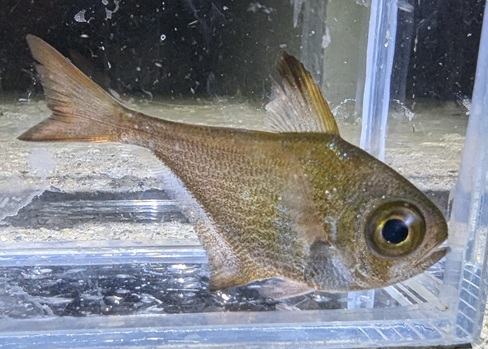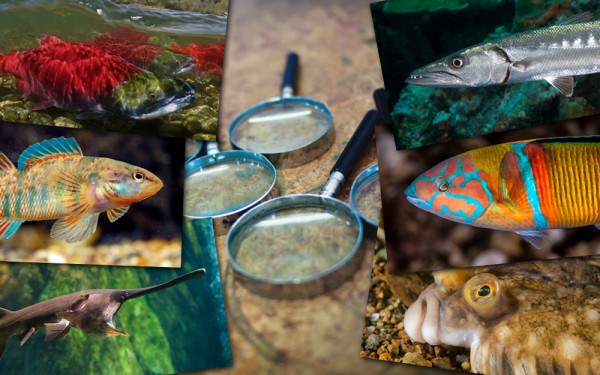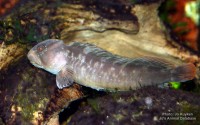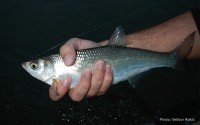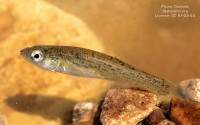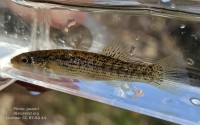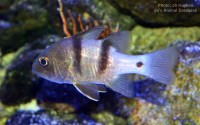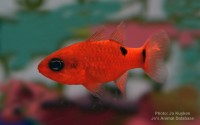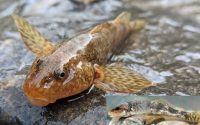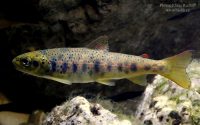Indian sweeper
(Pempheris mangula)
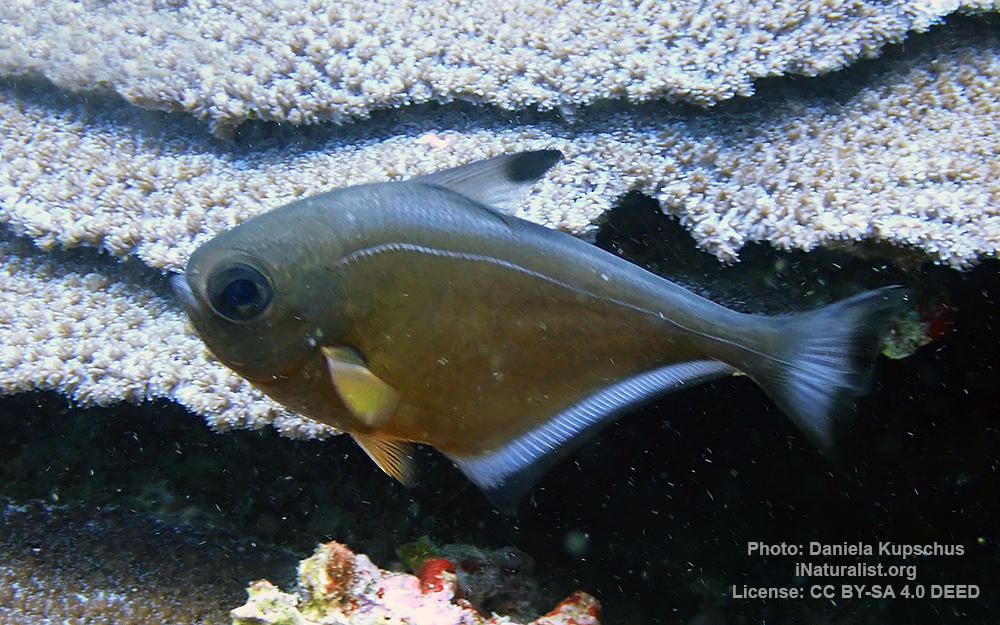
Image source: Daniela Kupschus | inaturalist.org
Classification
General data
Pempheris mangula, the black-edged sweeper, Moluccan sweeper or black-margin bullseye is a species of Indo-Pacific sweeper from the family Pempheridae.
The history of the identification of the Indo-Pacific sweepers is complex and this species has been identified as the Pempheris vanicolensis which has colonised the Mediterranean Sea from the Red Sea via the Suez Canal by Lessepsian migration but this identification is not universally accepted.
Pempheris mangula has a lateral line consisting of 49-60 pored scales with 4.5-5.5 scale rows above lateral line; 14–18, normally 16, scales around the caudal peduncle. Only the tip of the dorsal fin is blackish. The very large eye has a diameter which is equal to 13.0-15.3% of the standard length and 43.6-51.5% of the head length. The deep body is 44.6-49.1% of the standard length in depth. The flans are usually marked with irregular faint longitudinal light stripes. It also has 6 spines and 9-10 soft rays in the dorsal fin while the anal fin has 3 spines and 34-42 soft rays. It has a count of 25 vertebrae.
Pempheris mangula has been said to have a wide Indo-Pacific distribution from the eastern coast of Africa and Madagascar to the north western coast of Australia as far south as New South Wales, but being absent from the South China Sea and the Malay Archipelago. It is also been claimed to be the species of sweeper which has colonised the eastern Mediterranean from the Red Sea via the Suez Canal. In the Mediterranean it was first recorded in 1979 off Lebanon. It has reached as far as the coast of Libya and the Aegean Sea.
